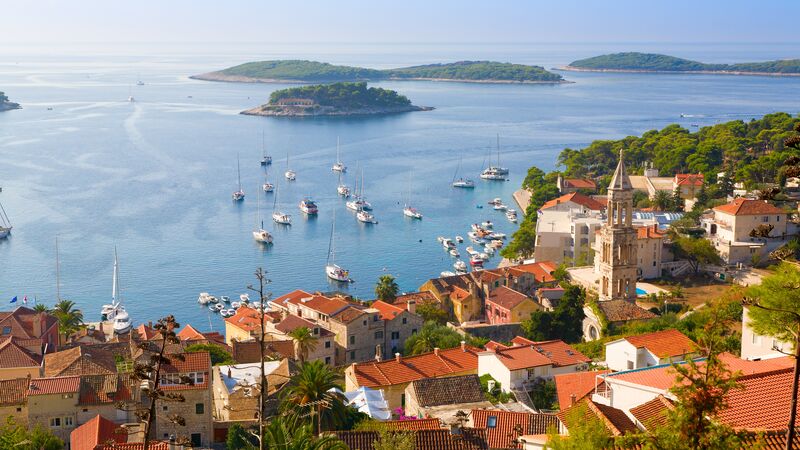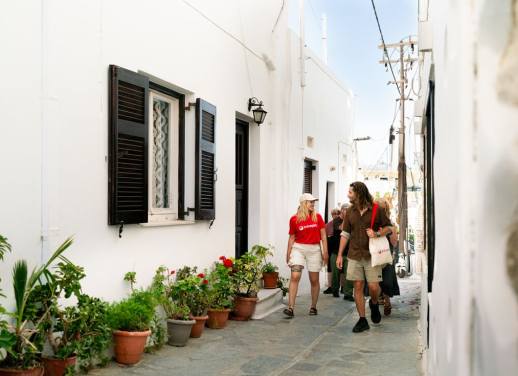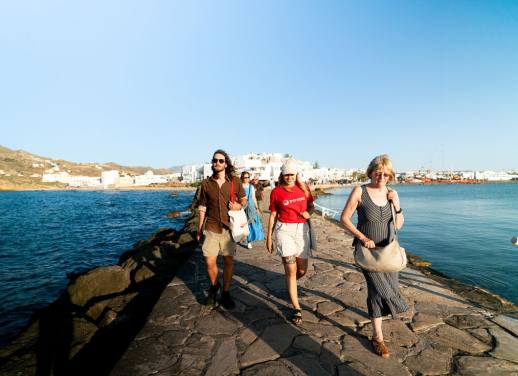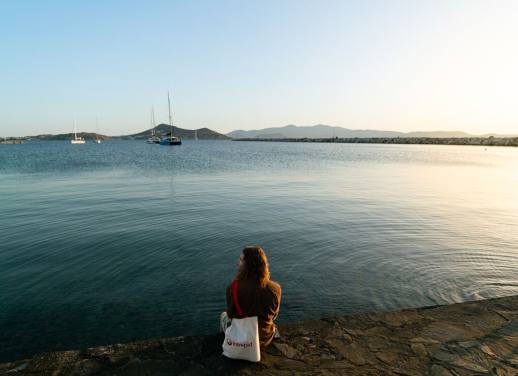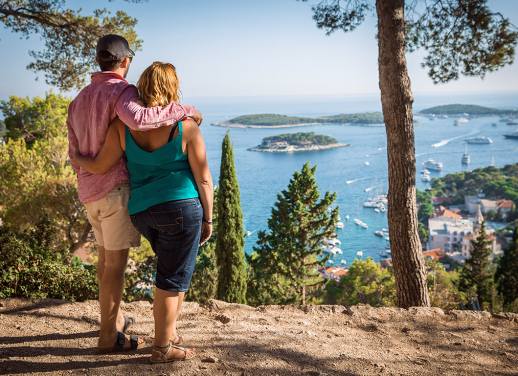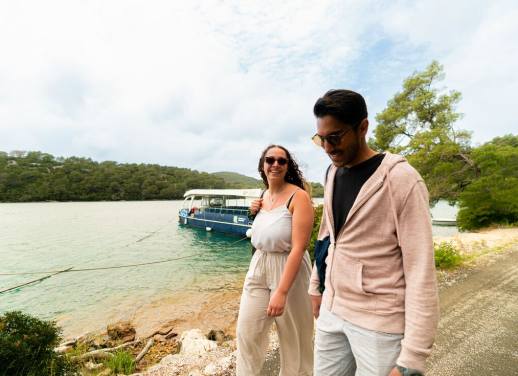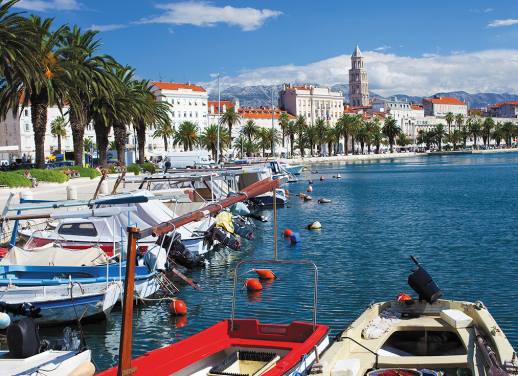Got visions of the Med dancing in your head?
Do you picture yourself dancing through white-washed alleyways to the soundtrack of Abba or training your dragons in the cellar of your fortress? Or maybe you’re like me and you watch waaaay too much tv, in which case it’s time to press pause and plan a real-life trip. With modern-day CGI and special effects, few destinations sparkle as much in real life as they do on the big screen, but Greece and Croatia are undoubtedly the exceptions.
While both places boast idyllic islands, ancient history and mouthwatering cuisine, this handy guide will help compare the highlights of these two Mediterranean countries so you can choose the perfect destination for your voyage off the couch.
Film and TV
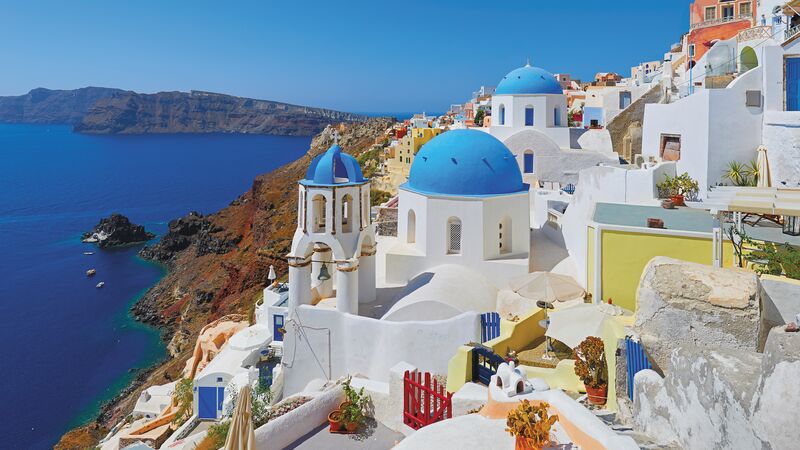
The Greek Islands are known for luring in dreamers and romantics, so whether the coming-of-age film, The Sisterhood of the Traveling Pants is always on replay, or the R-rated racy 80’s flick Summer Lovers is more your speed (this is a no-judgment zone) there are plenty of juicy releases to transport you. But perhaps the most famous depiction of this region is that of the ultimate guilty pleasure movie, Mamma Mia, a whirlwind romance set to a delicious 70’s pop soundtrack.
The modern musical takes place on a fictional Greek island called Kalokairi and features Meryl Streep as the free-spirited Donna, who belts Abba anthems while dodging three ex-lovers. If you want to live out your own Dancing Queen fantasy, you can check out the film’s actual set locations: the islands of Skiathos and Skopelos in the Sporades archipelago. Other films to transport you to this Ionian paradise include cult classic Zorba the Greek (filmed in Crete), Bond blockbuster For Your Eyes Only (filmed in Corfu) or cinematic masterpiece The Big Blue (filmed on Amorgos and Ios).
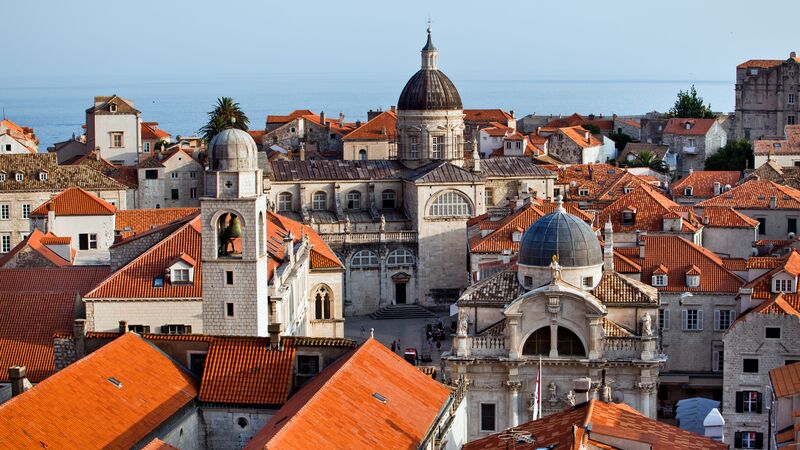
On the other hand, Croatia’s medieval cities and picturesque islands shot to stardom as the backdrop for a different type of fantasy: HBO’s record-breaking drama, Game of Thrones. Based on the novels by George R. R. Martin, the fictional series depicts noble families fighting for control of the “Iron Throne” and features impressive shots of castles and churches that appear frozen in time — no special effects needed.
Dubrovnik (a medieval walled city on the Dalmatian Coast with distinctive red roof tiles) stands in for one of the most recognisable locations for fans of the show: King’s Landing, the capital city of the Seven Kingdoms. You can sign up for a Game of Thrones tour, but even if you’ve never seen the series, the city’s Old Town is listed as a UNESCO World Heritage Site and is well worth exploring.
Split, the second largest city in Croatia, houses the medieval Kliss Fortress, shooting location for the fictional town of Meereen: residence of beloved Game of Thrones protagonist Daenerys Targaryen. Diocletian’s Palace (also a UNESCO World Heritage Site) is featured in some of Daenerys’ critical scenes, with the palace cellar standing in for her throne room and the spot where she trained her precious dragons.
So, whether you’re a Donna or a Daenerys, riding dragons or hiding from husbands, both Greece and Croatia are fantastic destinations for those who want to visit their favourite silver screen sites in real life.
VISIT KING’S LANDING AND MEEREEN ON OUR EXPLORE CROATIA TOUR
Islands
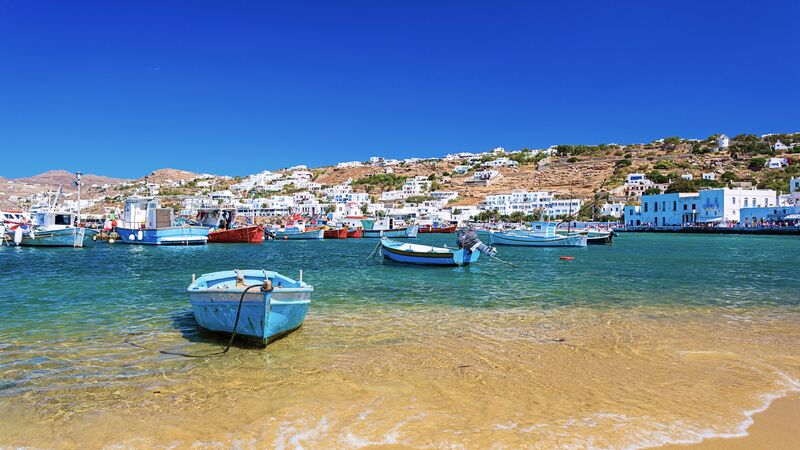
When it comes to island escapes, both Greece and Croatia share more similarities than differences, especially when it comes to charming villages, crystal-clear water and abundant fresh seafood. Come for the endless turquoise sea, and stay for the history and culture.
The Greek islands are grouped into six unique chains: the Argo-Saronic Islands, the North Aegean Islands, the Ionian Islands, the Dodecanese, the Sporades, and arguably the most famous, the Cyclades. The Cyclades are a dense grouping of islands in the Aegean Sea and are home to high-profile hotspots like Santorini, Mykonos, Naxos, Paros, and Delos, the ancient architectural heart of the chain. While some islands have airports, all are accessible by boat, although sailing times and conditions can vary.
You can use the ferry system to travel between islands, but our favourite (headache-free) way to see the Cyclades is on a small vessel sailing trip, cruising from Santorini to Mykonos for the perfect mix of glitzy nightlife and sleepy fishing villages. These islands attract everyone from sunset-swooning honeymooners to history buffs, boutique shoppers and solitude seekers. Whichever category you fall into, the Greek Islands are sure to check off all of the major holiday boxes.
Time for a getaway? Browse our top Greece sailing trips
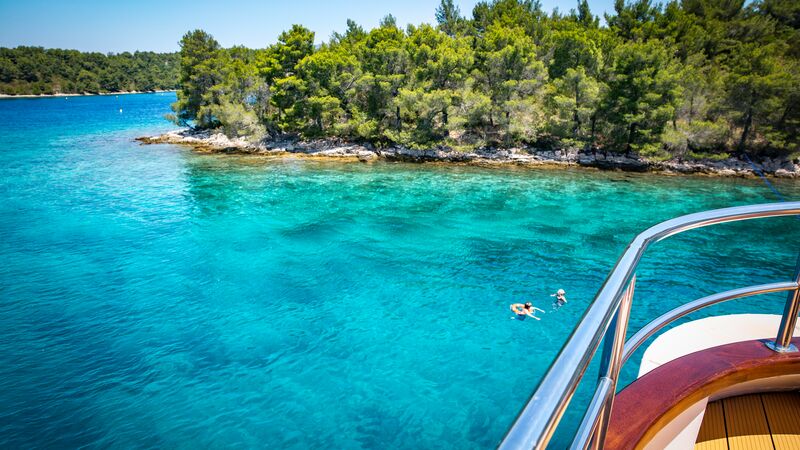
The Adriatic Islands hug the mainland and are closer together, so if you love the idea of island-hopping but still want to be close to shore, Croatia is right up your alley. A leisurely cruise down the spectacular Dalmatian Coast will give opportunities to visit Hvar, the sunniest island in the Adriatic, pine-tree-covered Korcula and lake-laden Mljet, all while soaking up scenic grottos and white sand beaches. Since the distance between islands is short, itineraries can be fairly customisable; feel like exploring Roman relics one day but blissing out on a beach the next? Done and done.
Sail the coast of Croatia
Landscapes
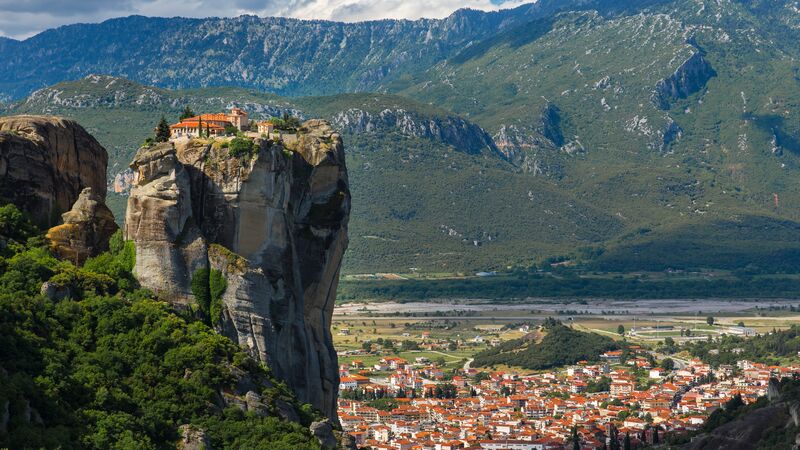
Often overlooked in favour of the seductive islands and coastline, mainland Greece has its fair share of natural beauty, especially if you’re hunting for historic sites. You can head a few hours inland, past rolling hills and bucolic villages, to visit Meteora for a glimpse back in time.
In ancient Greece, steep cliffs and rocky slopes were often chosen as the building sites for sky-high monasteries so that meditation could happen closer to the heavens, and Meteora is home to 24 14th-century monasteries precariously perched at the top of 1000-foot (300-meter) karst pinnacles. Six of the monasteries are still occupied and open for visitors to check out museums, chapels and artifacts, but the real wow factor is the breathtaking view. The roads between the monasteries have plenty of lookout spots to enjoy a birds eye view of the surrounding forests and terracotta villages below, and if you time it right, you could witness one of the most other-worldly sunsets of your life.
UNCOVER ANCIENT HISTORY ON A MAINLAND GREECE TRIP
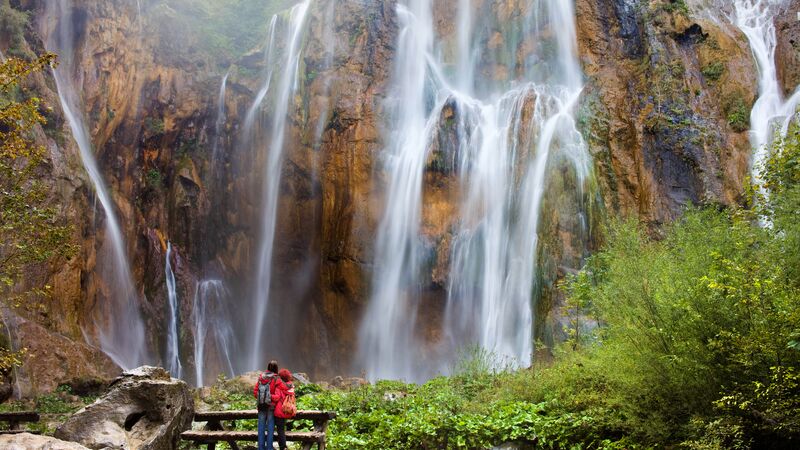
If you’ve been living by the gospel of “don’t go chasing waterfalls” since the early 90s, a trip to Croatia will have you singing a different tune, since the country is home to some of the world’s most beautiful (and famous) waterfalls.
Plitvice Lakes National Park is well-known for its network of 16 jewel-toned lakes that cascade into over 90 spectacular waterfalls, and chances are if you search “waterfalls” on Google or Instagram, at least one shot of Plitvice will come up. This UNESCO World Heritage site has trails, boardwalks, boats and a shuttle to provide easy access to different sections of the lakes, so chase ’em to your heart’s content. Although not a designated UNESCO site, Krka National Park is equally iconic, with mighty falls spilling into tranquil emerald pools and ample picnic areas to take in the views. Although swimming is prohibited in Plitvice and Krka, both parks are just a short road trip inland. After spending a day exploring, you’ll be within an hour’s drive of amazing beaches in Zadar and Split.
RELATED: WHY PLITVICE LAKES MIGHT BE THE MOST STUNNING DESTINATION IN CROATIA
Cuisine
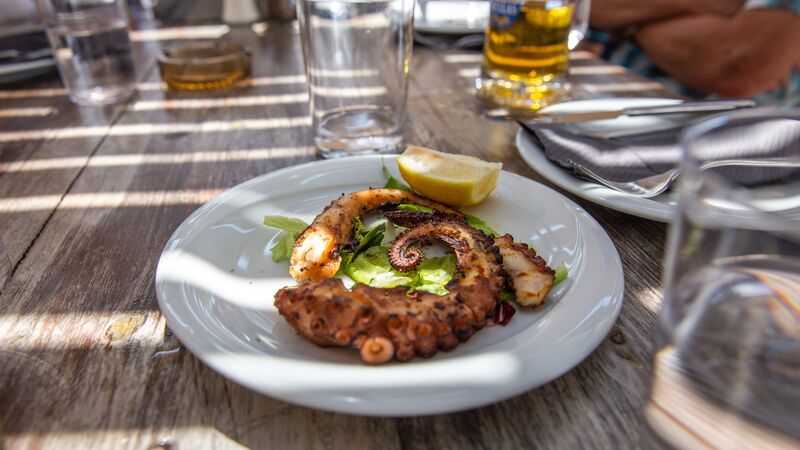
One area where these two countries are truly neck in neck? The cuisine. Greece is notorious for a number of cooking staples, like feta cheese, olive oil and honey, and if eating freshly caught fish in a seaside taverna is your idea of heaven, this is the place for you. Abundant olive groves will give you the chance to taste subtle flavour changes in oils from different regions, a practice not unlike wine tasting.
Local dishes often focus on fresh produce and bold flavours, so both vegetarians and meat lovers will be happy here. We love a Greek mezze feast (an array of small plates similar to tapas) featuring classics like dolmades (stuffed vine leaves), dips and fresh vegetables. Try moussaka, a layered dish with eggplant, spiced meat and creamy sauce or give chargrilled octopus a try. Just don’t forget to say yamas with a glass of ouzo, the iconic Greek aperitif.
SAVOR ICONIC GREEK FLAVOURS ON A REAL FOOD ADVENTURE

Thanks to a range of microclimates, Croatian food perfectly exemplifies the idea of Terroir, or food that tastes like the land. The island of Pag is known for Paški sir (Pag cheese), made from the milk of herds of local sheep that graze on herbs and salty grasses, giving the cheese a distinct flavour.
Since the cuisine focuses on local produce, there are tons of opportunities to see where your food comes from. Think touring fish markets and tasting fresh seafood on the Dalmatian coast or exploring olive groves and sampling world-class olive oils in Istria. All of the food is fresh and delicious but can be fairly meat and seafood dominant, so plan accordingly if your diet is plant-based!
TASTE YOUR WAY THROUGH THE BALKANS ON A CROATIA AND SLOVENIA FOOD TOUR
History
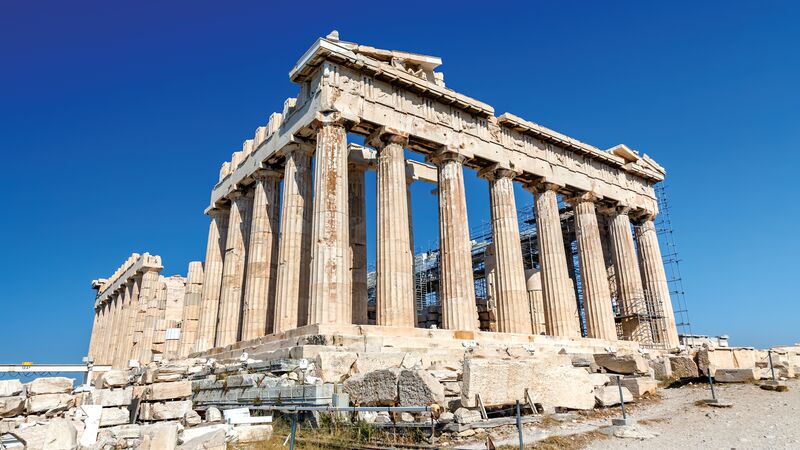
When it comes to history, few places can compete with ancient Greece… it is the cradle of civilisation, after all. Ancient Greece birthed everything from government and democracy to epic poems and fantastical myths, progress in arts, literature and theater, to some of the greatest minds in math, philosophy and science. This overachieving little country holds an incredible collection of remnants of one of the oldest civilisations in the world, and its impressive ancient ruins make it a top destination for history buffs and mythology lovers alike.
Mainland Greece is home to ancient monuments like the Temple of Apollo, the Oracle of Delphi, the Acropolis of Athens, and Ancient Olympia. The capital city of Athens boasts well over 50 museums, and if you’re hooked on history, you could easily spend a week here. On the island of Crete, a trip to the ruins of Knossos will have you standing in what’s rumored to be the oldest city in Europe, while the uninhabited island of Delos (the mythological birthplace of Apollo and Artemis) houses the most extensive excavations in the Mediterranean.
RELATED: FIVE GREEK ISLANDS FOR MYTHOLOGY LOVERS
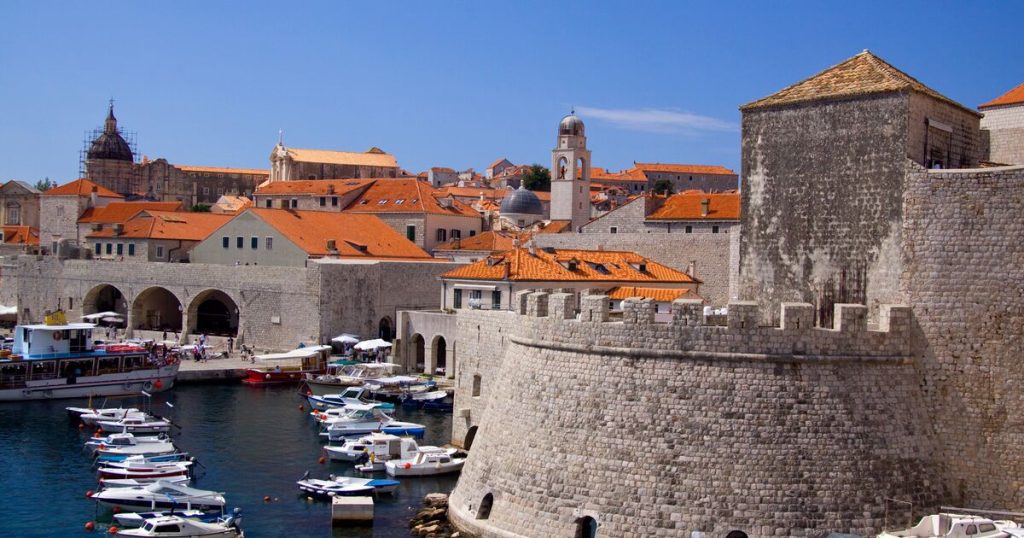
When it comes to UNESCO World Heritage sites, Croatia clocks a respectable 10, so history enthusiasts certainly shouldn’t discount this beautiful Balkan country. A medieval city hopper’s paradise, you can visit Split to see the iconic Diocletian Palace, Poreč, an ancient Roman town famous for the Episcopal Complex of the Euphrasian Basilica, or Pula, home of a remarkably well-preserved Roman amphitheater. Dubrovnik, the famously walled city on the Dalmatian Coast, is considered the epicentre of cultural activity in Croatia, with many medieval buildings still standing proudly against a backdrop of the turquoise Adriatic sea.
RELATED: SEVEN LESSER KNOWN CROATIAN DESTINATIONS TO AVOID CROWDS
Verdict
Ok, don’t blame us for taking the easy route, but we honestly can’t choose a favourite when it comes to these two Mediterranean countries. Stunning coastlines, incredible fresh food and Instagram-worthy photos around every corner have us daydreaming about both. Why not combine the two and embark on a trip from Dubrovnik to Santorini to get a taste of ancient ruins, sailing and sightseeing and enjoy the very best these countries have to offer.

